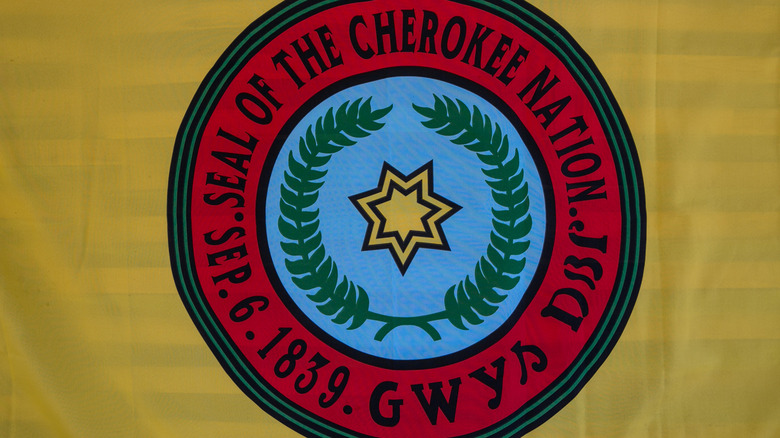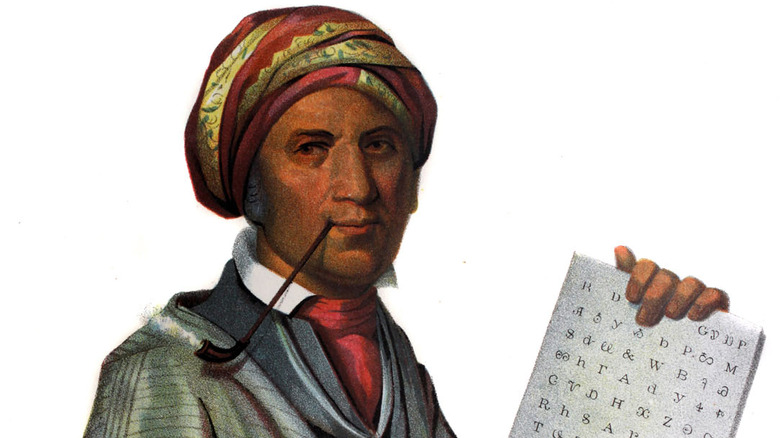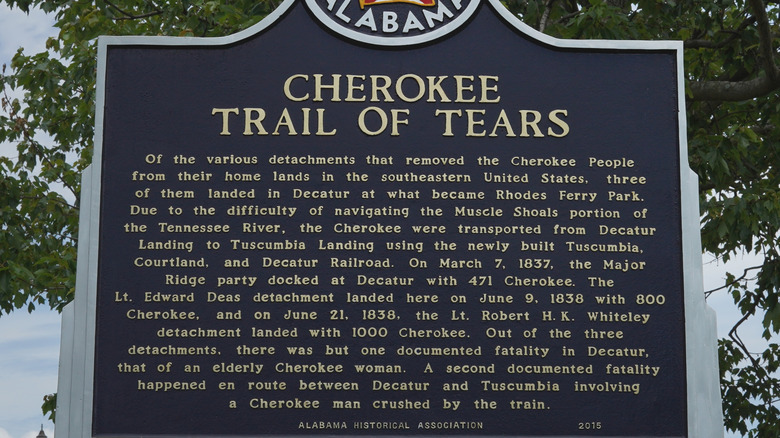This Was The First Newspaper Printed In An Indigenous Language
Language is a key component of culture, often intertwined with art, politics, and especially history. Islamic writing decorates mosques. In France, the "Académie Française" is an organization dedicated to maintaining the French language. However, indigenous groups all over the world are seeing their languages disappear. Reuters reports that around one third of Brazil's languages could disappear by 2030. Most countries in South and Central America are in the same situation. Languages are always evolving and sometimes that means they die out naturally. But for some, the loss of such languages is due to discrimination from government policies. These are examples of cultural genocide.
The same driving forces of cultural genocide have long been at play in the United States. There were even boarding schools where indigenous children could not speak their native languages (per New Republic). In the 21st century, Native Americans aim to teach their languages to as many people as possible and also aim to teach the history of those languages. This makes publications like newspapers all the more valuable.
Sequoyah created a written language for the Cherokees
As previously mentioned, languages evolve over time. PBS states that for some in North America, languages only existed orally. After colonization began, tribes began writing their languages down. For the Cherokees, this meant creating a written language based solely on its sounds. Sequoyah created a written version of the Cherokee language based on syllables despite not being able to read or write himself. Many considered his attempts at creating a language to be unimportant. However, within six months after he presented his written language in 1821, around one quarter of the Cherokees were using it.
Dr. Ellen Cushman of Northeastern University stated that among the world's syllabaries, the Cherokee language "is the only one that was invented by a Native person, for Native people." Just seven years after Sequoyah finished creating the Cherokee's written language, the first newspaper printed in an indigenous language was published. The Cherokee Phoenix circulated through Cherokee capital of New Echota, Georgia in 1828 (per History).
The Cherokee Phoenix covered the Indian Removal Act
The Cherokee Phoenix was printed in English and Cherokee. It became a source of unity during the subsequent attacks upon the Native Americans in the 1830s. The newspaper printed information on the Indian Removal Act of 1830, which resulted in the forced relocation of multiple tribes in the southern states (including the Cherokees) in an event referred to as the Trail of Tears (per NPS). The newspaper also covered major court cases surrounding issues like the Cherokee Nation v. Georgia in 1831, which ruled the Cherokee nation as a "foreign domestic state" that was "capable of managing its own affairs" (per ThoughtCo).
The Georgia Guard once burned down the Cherokee Phoenix's printing office as part of the attempts to move the Cherokees out of Georgia and sell their lands. A new newspaper began in Tahlequah in 1844, a town formed on the Native American territory to which the Trail of Tears led. As of 2007, the Cherokee Phoenix has a website that has grown to include a presence on YouTube, Facebook, Twitter, and Instagram.


